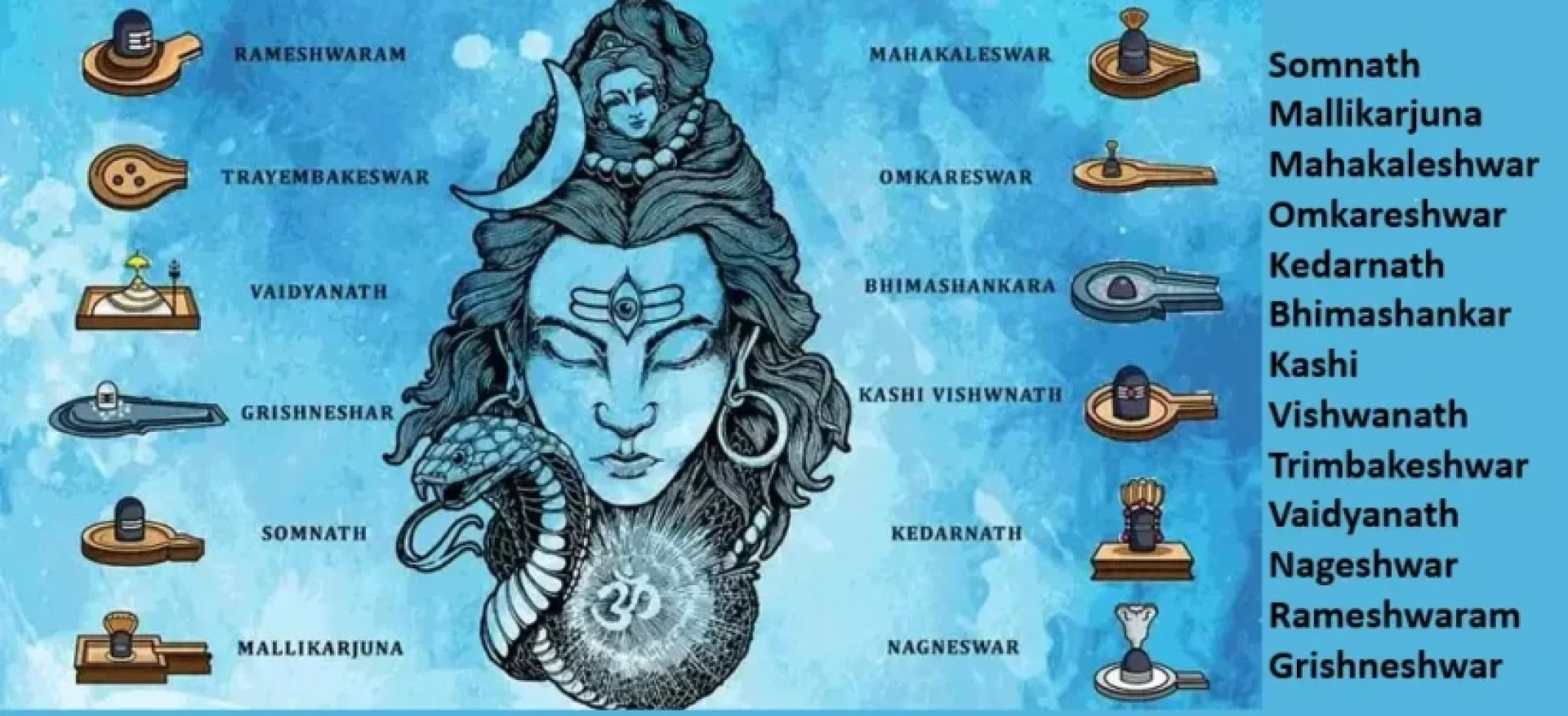
How to do 12 Jyotirlinga Yatra in sequence?
How to Do the 12 Jyotirlinga Yatra — a practical guide from a decade on the road
Want to complete the 12 Jyotirlinga Yatra circuit without wasting time or missing local rules that make a pilgrimage smooth? After ten years of traveling across India and visiting most shrines multiple times, here’s a practical, tested plan: an ideal order, efficient group routing, festival windows, hidden tips, and insights you won’t often find online.
The 12 Jyotirlingas (quick list)
- Somnath, Prabhas Patan, Gujarat
- Mallikarjuna, Srisailam, Andhra Pradesh
- Mahakaleshwar, Ujjain, Madhya Pradesh
- Omkareshwar, Khandwa/Omkareshwar, Madhya Pradesh
- Kedarnath, Rudraprayag district, Uttarakhand
- Bhimashankar, Pune district, Maharashtra
- Kashi Vishwanath, Varanasi (Kashi), Uttar Pradesh
- Trimbakeshwar, Nashik, Maharashtra
- Vaidyanath (Baidyanath), Deoghar, Jharkhand (commonly accepted)
- Nageshwar, near Dwarka, Gujarat
- Rameshwaram, Ramanathapuram, Tamil Nadu
- Grishneshwar, Ellora (near Aurangabad), Maharashtra
Note: Some local traditions swap a couple of names or locations (e.g., Vaidyanath/Parli Vaijnath in Maharashtra), but the list above is the most commonly used across the country.
Related Read: Top 5 Must-Visit Jyotirlingas in India: A Complete Guide for Devotees
Best overall sequence — efficient and road, train, or flight friendly
If you want a continuous route with minimal backtracking, follow this sequence. It groups nearby sites to cut travel time and keeps you moving in a logical loop:
Suggested sequence (practical loop):
Somnath → Dwarka (Nageshwar) → Grishneshwar (Ellora) → Trimbakeshwar → Bhimashankar → Omkareshwar → Mahakaleshwar (Ujjain) → Kashi (Varanasi) → Vaidyanath (Deoghar) → Mallikarjuna (Srisailam) → Rameshwaram → Kedarnath
Why this order? It groups West to Central to East to South to North, which minimizes zig-zagging. You can use major hubs (Mumbai, Pune, Aurangabad, Indore, Varanasi, Chennai) for flights and trains. This breaks the circuit into manageable driving or train segments.
Jyotirlinga Location breakdown & logistics:
- Gujarat cluster: Somnath → Dwarka (both accessible from Rajkot, Porbandar, or Junagadh). Rent a car or use trains; plan for 2 to 3 days.
- Maharashtra (Aurangabad, Nashik, Pune) cluster: Grishneshwar (Ellora) → Trimbakeshwar → Bhimashankar. Use Aurangabad or Nashik as bases. These are a short drive apart, making it ideal for 3 days.
- Central India cluster: Omkareshwar → Mahakaleshwar (Ujjain) — reachable from Indore. Great for spiritual experiences at Narmada and Shipra.
- Eastern cluster: Kashi (Varanasi) → Vaidyanath (Deoghar) — trains connect Varanasi to Jasidih and Deoghar. Budget 2 to 3 days.
- Southern cluster: Mallikarjuna (Srisailam) → Rameshwaram — these are long distances. Internal flights or overnight trains are sensible options.
- Mountain finish: Kedarnath Yatra – end here if you want a mountain finale; plan separately due to trekking and seasonality.
Timing: seasons and festivals
- Best months overall: October to February (post-monsoon/winter) and March to May (pre-monsoon) — clear roads, festival energy, and accessible mountain routes.
- Kedarnath: May to October (temples open in summer; closed in heavy winter). Trek and weather windows are important.
- Rameshwaram & South India: year-round, but avoid extreme summer. Monsoons can affect travel to hill shrines.
- Important festivals: Mahashivratri — great for energy and special aartis, but expect huge crowds. Try to avoid major festival dates for faster darshan unless you want to experience the crowds.
Real insider tips you won’t often read
- Early-morning puja windows: For many Jyotirlingas, the first puja (around 4 to 6 AM) is quieter and better for photography and personal time. Book a “special puja” slot via the temple website where available.
- Local priests and phalas: Hiring a local purohit (priest) through the temple management gives you authentic rituals and often quicker access for special abhisheks. Avoid touts outside the temple and use the trust or committee counters.
- Cash vs digital: Smaller shrines (Mallikarjuna, Bhimashankar, Somnath counters) still prefer cash for prasadam and local guides. Carry some local currency even if you plan to pay major hotels digitally.
- Dress and offerings: Wear a white or saffron kurta for men and a simple salwar or chunni for women as a sign of respect. Fresh flowers from local markets are preferred over synthetic garlands.
- Health and accessibility: Grishneshwar and Kashi have wheelchair access; Kedarnath requires trekking or a helicopter lift (book in advance). If elderly devotees are in the group, plan for helicopter, pony, or porter options for hill shrines.
- Combine rituals with local rivers: Make a small dip or offering at the Narmada (Omkareshwar), Shipra (Ujjain), and Ganges (Varanasi) — this adds a deeper, traditional experience not often emphasized in travel guides.
Packing and planning checklist:
- Printed IDs, PNRs, and temple booking confirmations.
- Comfortable, modest clothing, walking shoes, and a light, foldable umbrella.
- Small puja kit: red kumkum, a small cloth, cash for priests, and packeted dry prasad for gifting.
- Basic meds, motion-sickness tablets, and altitude meds if going to Kedarnath.
- Power bank and local SIM or offline Google Maps packs for rural areas.
Common mistakes pilgrims make
- Trying to visit all 12 non-stop in 7 to 10 days — that’s unrealistic. Plan for 3 to 6 weeks or use helicopters and intercity flights and expect 2 to 3 weeks with tight logistics.
- Ignoring local calendars: Some temples close for a few weeks for rituals — check notices from temple admins.
- No buffer days: Train cancellations, seasonal road issues, and festival crowds can happen — add extra days for each cluster.
Compact plan (2 to 3 weeks, fast-paced)
- Week 1: Gujarat (Somnath, Dwarka) → fly to Aurangabad → Grishneshwar
- Week 2: Nashik/Pune cluster (Trimbakeshwar, Bhimashankar) → Indore (Omkareshwar) → Ujjain
- Week 3: Fly to Varanasi (Kashi) → Deoghar (Vaidyanath) → South (Srisailam and Rameshwaram) → fly to Delhi and onward to Kedarnath seasonally.
Final thought — make it a pilgrimage, not just a checklist
Completing the 12 Jyotirlinga yatra is about both logistics and devotion. Slow down where you can; sit through an extra aarti, chat with a local priest, and taste the temple prasadam. Those small detours transform a checklist into a memorable journey.
Neeraj is a travel and hospitality professional with over seven years of experience in the tourism industry. He holds a Master’s degree in Tourism Management and has collaborated with renowned travel companies and hotel brands such as Taj Hotels, Marriott, MakeMyTrip, and Thomas Cook & Now with Travel Sifar. His expertise lies in creating in-depth destination guides, spiritual and Himalayan travel content, and practical itineraries that help travelers make confident choices.
Having worked across both corporate travel and hospitality consulting, he combines academic knowledge with hands-on industry experience. His writing is trusted by readers for its accuracy, authenticity, and real-world insights.
Passionate about sustainable tourism, he focuses on highlighting local cultures, responsible travel practices, and meaningful experiences. Beyond writing, he enjoys trekking in the Himalayas, exploring heritage sites, and engaging with communities to bring unique travel stories to life.
- This author does not have any more posts.
